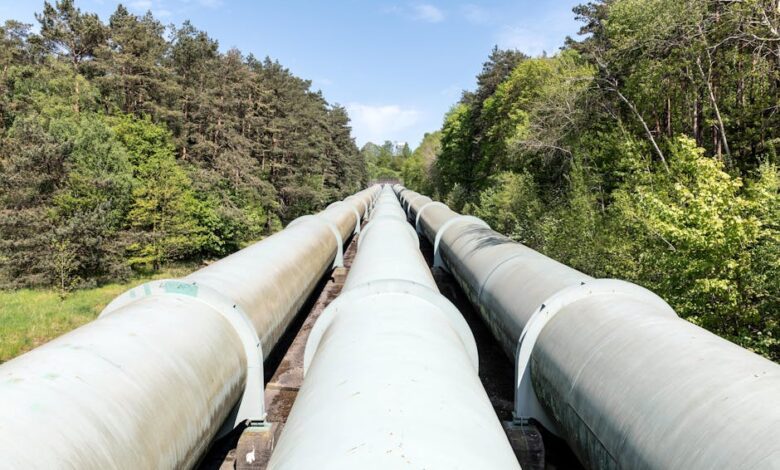Navigating the Energy Landscape: The Interplay of OPEC, Renewables, and Investment Strategies in the Oil Market

The global oil market is a complex web of interdependencies influenced by a myriad of factors, from geopolitical tensions to technological advancements in energy. As the Organization of the Petroleum Exporting Countries (OPEC) navigates the shifting sands of production levels and pricing strategies, its decisions continue to reverberate across the global economy, impacting everything from consumer prices to inflation rates. Meanwhile, the rise of renewable energy trends is challenging the traditional dominance of oil, prompting companies to adapt or risk obsolescence. This article delves into the multifaceted dynamics of the oil industry, exploring how OPEC's policies shape market conditions, the implications of renewable energy on oil demand, and strategic insights for investors looking to capitalize on oil futures and exchange-traded funds (ETFs). Additionally, we will examine the transformative role of shale oil, the influence of geopolitical conflicts on supply and demand, and the pressing effects of climate change policies on oil companies. As electric vehicles gain traction, the future of oil demand hangs in the balance, making it essential to analyze the correlation between oil prices and inflation in this rapidly evolving energy landscape. Join us as we unpack these critical themes and consider the future of the oil industry in an increasingly complex global environment.
- 1. **OPEC's Influence: Navigating the Shifts in Global Oil Prices**
- 2. **Renewable Energy Revolution: Disrupting the Traditional Oil Landscape**
- 3. **Investment Insights: Strategies for Thriving in Oil Futures and ETFs**
1. **OPEC's Influence: Navigating the Shifts in Global Oil Prices**
The Organization of the Petroleum Exporting Countries (OPEC) plays a pivotal role in shaping global oil prices through its production decisions and collective strategies. Established to coordinate and unify petroleum policies among its member countries, OPEC's influence is most evident during times of market volatility. For instance, by adjusting oil production levels, OPEC can either alleviate or exacerbate price fluctuations, directly impacting the global economy.
In times of oversupply, OPEC may opt to cut production to stabilize or increase prices, as seen during the oil price collapse in 2014. Conversely, when prices soar, the organization might decide to increase output to avoid negative economic repercussions and encourage consumption. The recent dynamics of OPEC+, which includes non-OPEC oil producers like Russia, further complicate the landscape, as these alliances can lead to more coordinated responses to market changes.
Moreover, OPEC’s decisions are often influenced by external factors such as geopolitical tensions, economic conditions, and emerging energy trends. For example, the rise of renewable energy sources and the global push for decarbonization challenge OPEC’s traditional market dominance, prompting the organization to reconsider its long-term strategies. As countries increasingly adopt renewable energy technologies, OPEC must navigate these shifts while maintaining its relevance in a transforming energy sector.
Overall, OPEC's influence on global oil prices is a complex interplay of production strategies, market responses, and external pressures. Understanding these dynamics is crucial for investors and policymakers alike, as they shape the future of the oil industry and the broader energy landscape.
2. **Renewable Energy Revolution: Disrupting the Traditional Oil Landscape**
The rise of renewable energy is fundamentally transforming the traditional oil landscape, creating both challenges and opportunities for the oil industry. As countries commit to reducing carbon emissions and transitioning to cleaner energy sources, the demand for fossil fuels is facing increasing pressure. Solar, wind, and other renewable technologies are becoming more cost-effective and widely adopted, leading to a significant shift in energy consumption patterns.
This renewable energy revolution is not only about the emergence of alternative energy sources but also about changing consumer preferences and government policies. Many governments are implementing aggressive renewable energy targets, incentivizing the development and deployment of clean technologies. This shift is causing traditional oil markets to reevaluate their long-term strategies, as the potential for reduced demand looms on the horizon.
Moreover, advancements in energy storage and grid management are enhancing the reliability of renewable sources, making them more competitive with oil. As electric vehicles (EVs) gain market share, the oil industry faces the prospect of diminished demand from the transportation sector, one of its largest consumers. This transition is prompting oil companies to diversify their portfolios, investing in renewable energy projects and exploring new technologies to remain relevant.
In response to these disruptions, major oil producers are beginning to adopt sustainability initiatives, focusing on reducing their carbon footprints and investing in cleaner energy solutions. While oil will likely remain a critical energy source for the foreseeable future, the ongoing renewable energy revolution is reshaping the industry's dynamics and compelling oil companies to adapt to a rapidly changing energy landscape. As this trend continues, the interplay between oil and renewable energy will define the future of global energy markets.
3. **Investment Insights: Strategies for Thriving in Oil Futures and ETFs**
Investing in oil futures and exchange-traded funds (ETFs) can be a lucrative strategy for those looking to capitalize on fluctuations in the energy market. Here are several key approaches to consider when navigating this complex landscape:
First, understanding the fundamentals of oil futures is crucial. Futures contracts allow investors to agree on a price for oil to be delivered at a future date, enabling them to profit from price changes. A thorough analysis of market trends, including supply and demand dynamics, geopolitical events, and OPEC decisions, can provide insight into potential price movements. Investors should also stay informed about economic indicators, as these can significantly influence oil prices.
Second, diversification through oil ETFs can mitigate risk. ETFs offer exposure to a basket of oil-related assets, such as companies involved in oil extraction, refining, or exploration. By investing in ETFs, individuals can spread their risk across multiple holdings rather than betting on a single futures contract. This approach can help cushion the impact of volatility in the oil market and provide more stable returns over time.
Finally, employing technical analysis can enhance investment strategies. Many traders utilize charts and historical price patterns to identify trends and make informed decisions. Key indicators, such as moving averages and the relative strength index (RSI), can signal potential entry and exit points for trades. Combining technical analysis with fundamental insights can lead to more effective investment strategies in the oil sector.
By staying informed, diversifying investments, and utilizing analytical tools, investors can navigate the complexities of oil futures and ETFs, positioning themselves for potential success in this dynamic market.
In conclusion, the intricate interplay between OPEC's decisions, renewable energy trends, and the evolving landscape of the oil industry underscores a transformative era in global energy markets. As OPEC continues to wield significant influence over oil prices, the growing adoption of renewable energy sources is reshaping the traditional dynamics of supply and demand. Investors keen on oil futures and ETFs must navigate these complexities, leveraging strategies that account for both market fluctuations and the rising prominence of alternative energy investments.
Simultaneously, the emergence of shale oil has fundamentally altered the energy landscape, introducing new dynamics that challenge the established order. Geopolitical conflicts further complicate this scenario, often leading to unpredictable shifts in oil supply and demand. Coupled with climate change policies that increasingly hold oil companies accountable, the industry faces pressures that could redefine its future trajectory.
The anticipated rise of electric vehicles adds another layer of complexity, signaling a potential decline in oil demand that cannot be overlooked. As we analyze the correlation between oil prices and inflation, it becomes evident that the road ahead will require adaptability and foresight. Stakeholders in the oil sector must remain vigilant, balancing immediate economic interests with long-term sustainability goals. Ultimately, the convergence of these factors will shape not only the oil industry but also the broader conversation about energy's role in our rapidly changing world.





